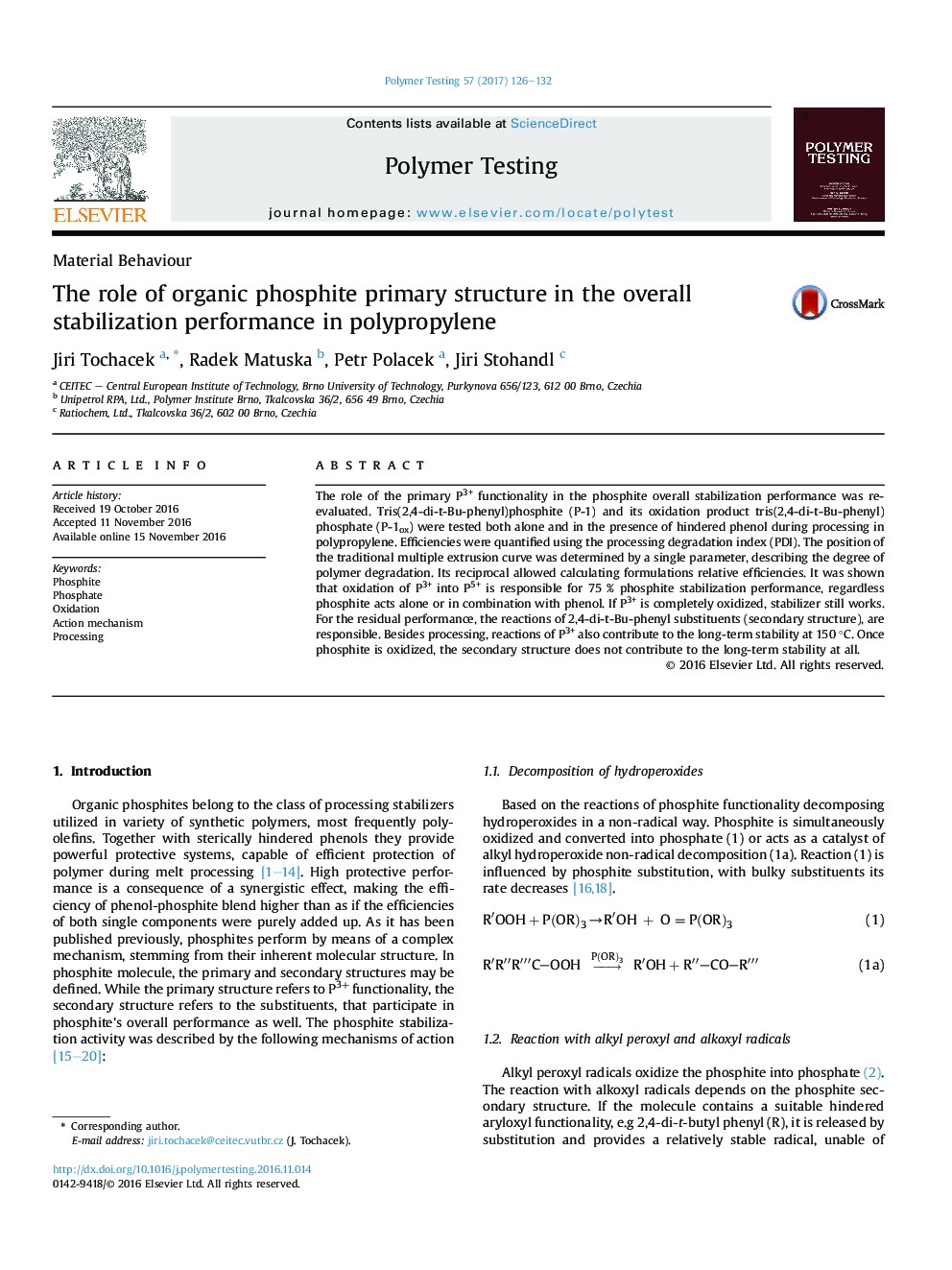| Article ID | Journal | Published Year | Pages | File Type |
|---|---|---|---|---|
| 5205546 | Polymer Testing | 2017 | 7 Pages |
Abstract
The role of the primary P3+ functionality in the phosphite overall stabilization performance was re-evaluated. Tris(2,4-di-t-Bu-phenyl)phosphite (P-1) and its oxidation product tris(2,4-di-t-Bu-phenyl)phosphate (P-1ox) were tested both alone and in the presence of hindered phenol during processing in polypropylene. Efficiencies were quantified using the processing degradation index (PDI). The position of the traditional multiple extrusion curve was determined by a single parameter, describing the degree of polymer degradation. Its reciprocal allowed calculating formulations relative efficiencies. It was shown that oxidation of P3+ into P5+ is responsible for 75 % phosphite stabilization performance, regardless phosphite acts alone or in combination with phenol. If P3+ is completely oxidized, stabilizer still works. For the residual performance, the reactions of 2,4-di-t-Bu-phenyl substituents (secondary structure), are responsible. Besides processing, reactions of P3+ also contribute to the long-term stability at 150 °C. Once phosphite is oxidized, the secondary structure does not contribute to the long-term stability at all.
Related Topics
Physical Sciences and Engineering
Chemistry
Organic Chemistry
Authors
Jiri Tochacek, Radek Matuska, Petr Polacek, Jiri Stohandl,
